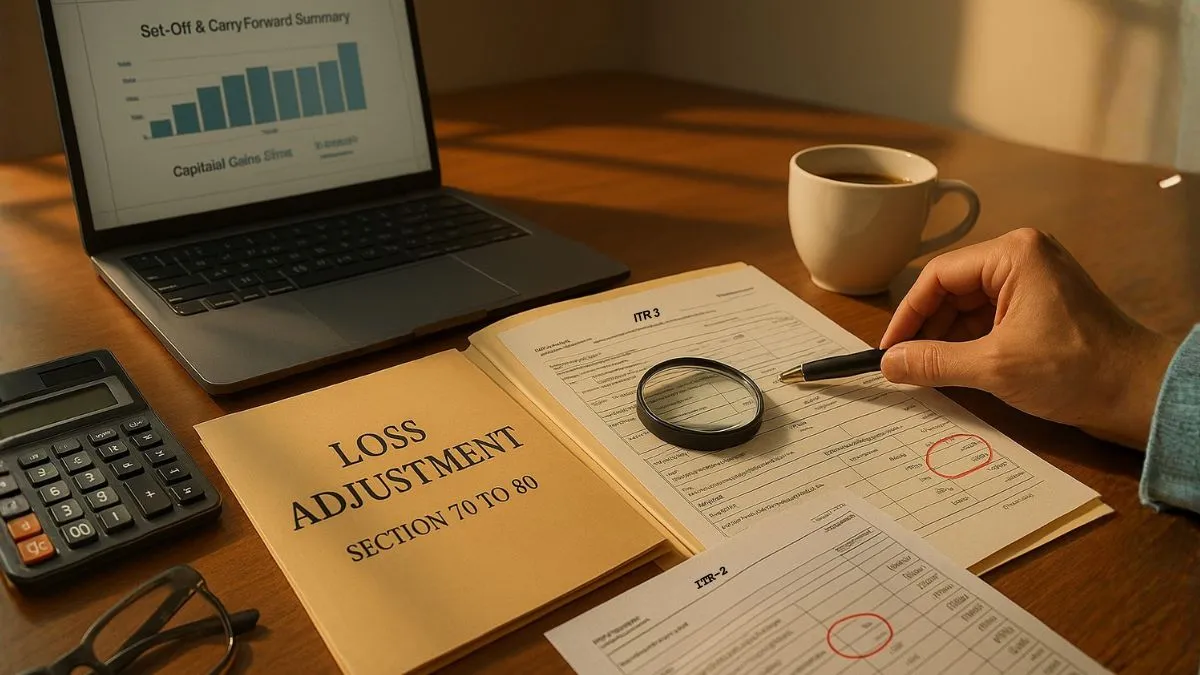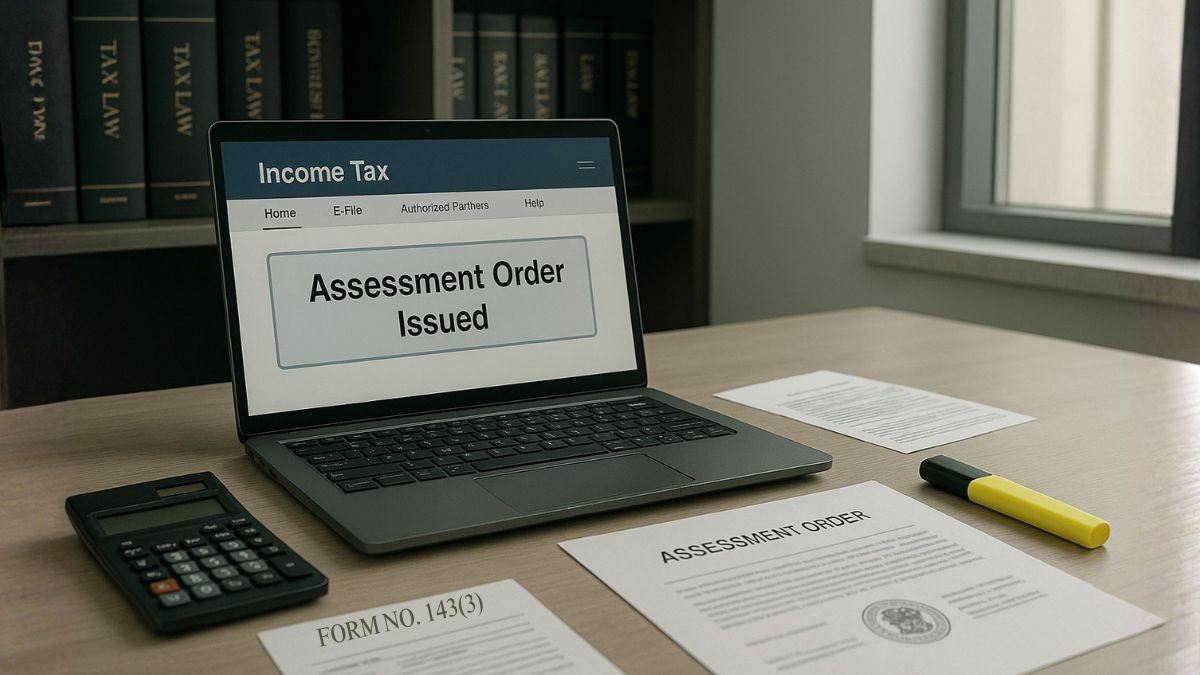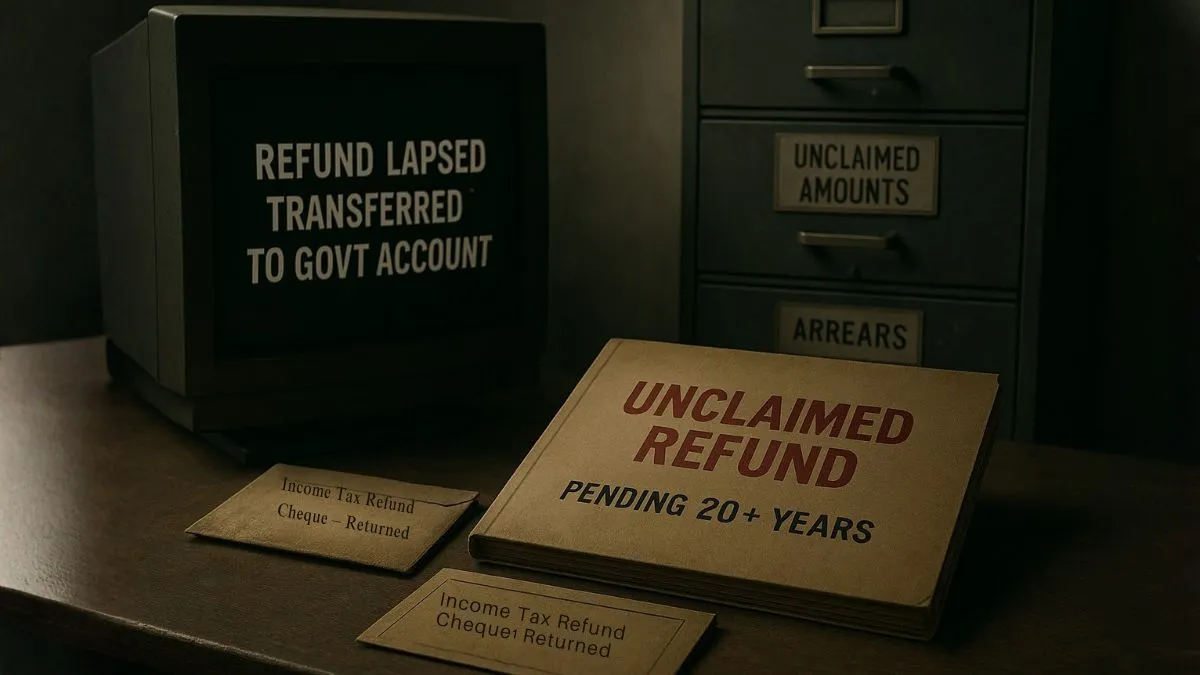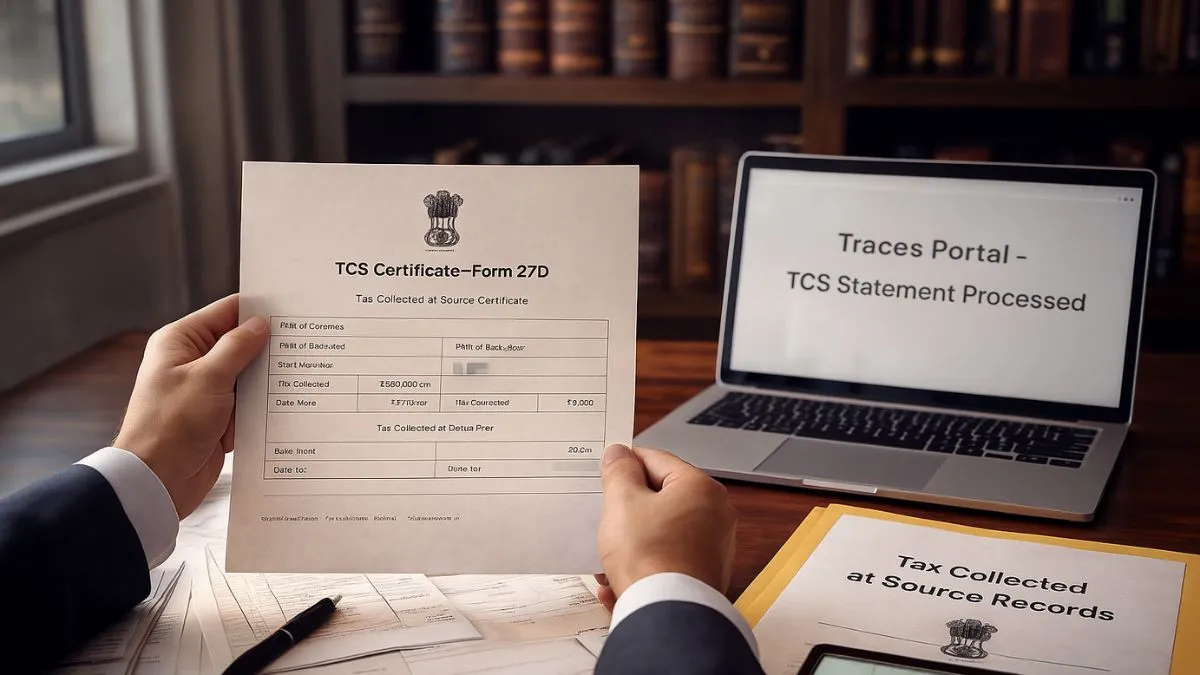
Most taxpayers learn about tax planning only when they make profits. But the real test of understanding the Income Tax Act is how you deal with losses. Losses may arise from business ups & downs, stock market volatility, property investments, or even everyday financial decisions. The government knows this. And that is why the Income Tax Act has dedicated provisions—Section 70 to Section 80—that tell you how to set off and carry forward losses correctly.
These rules ensure a fair system. You are not taxed unfairly on income without acknowledging genuine losses. At the same time, the law protects revenue leakage by imposing boundaries, such as restricting the set-off of house property loss to ₹2 lakh per annum and allowing taxpayers to carry forward capital losses for up to 8 years. Once you understand how each set-off bucket works, your tax planning becomes sharper & far more strategic.
What Does “Set Off” Mean in Income Tax?
In simple terms, set-off means adjusting a loss against a profit.
If you incurred a loss in one source of income, the law may allow you to adjust it against profit from the same head or another head.
Example:
You earn ₹6 lakh salary.
You incur a loss of ₹1.2 lakh from house property (home loan interest)."
You can set off ₹1.2 lakh against your salary.
This directly reduces your taxable income.
BUT… the law doesn’t allow free mixing. Each category has rules, limits & exceptions.
Also Read: Carry Forward and Set Off of Losses in the Case of Certain Companies
Types of Set-Off Under the Income Tax Act
Set-off happens in two big stages:
- Intra-Head Set Off (Section 70)
Losses under the same head can be adjusted against other income within that head.
Example:
Loss from one business can be set off against profit of another business.
- Inter-Head Set Off (Section 71)
Losses under one head can be set off against another head—but only in specific cases.
Example:
House property loss can be set off against salary, business income, etc., but only up to ₹2 lakh per year.
- Carry Forward of Losses (Section 72 to Section 80)
If losses remain after set-off, you can carry them forward.
Example keyword:
“allows taxpayers to carry forward capital losses for up to 8 years”
This is extremely useful for traders, investors & business owners.
House Property Loss — The Most Relevant Rule for Salaried People
The set-off of house property loss is restricted to ₹2 lakh per annum, even if your actual home-loan interest is higher.
If total interest is ₹3.5 lakh in a year:
- You can set off only ₹2 lakh
- Remaining ₹1.5 lakh must be carried forward
This one provision impacts lakhs of taxpayers every year—especially first-time homeowners who use loans.
Capital Loss Set-Off — What Most Investors Miss
Capital gains have strict walls around them.
- Short-Term Capital Loss (STCL)
- Can be set off against BOTH STCG & LTCG."
- Long-Term Capital Loss (LTCL)
- Can be set off ONLY against LTCG.
The Act clearly states that taxpayers can carry forward capital losses for up to 8 years if not fully adjusted in the same year. This is crucial for stock market investors & real-estate sellers.
Business Loss Set-Off — Section 72 Framework
Business losses (non-speculative) can be:
- Set off against any head except salary
- Carried forward for 8 years
But they can be adjusted only against business income in future years.
Also Read: Set-Off of Refunds Against Tax Payable
Set-Off Rules for Speculative Losses
Speculative losses (like intraday share trading) have the strictest rules:
- They can be set off only against speculative income
- They can be carried forward for 4 years
- They cannot be adjusted with salary or business income
This is where most new traders go wrong—assuming losses can offset any income.
Section 70 to Section 80 — The Core Framework Explained Simply
These sections include:
- Section 70: Intra-head set-off
- Section 71: Inter-head set-off
- Section 71B: Carry forward of house property loss
- Section 72: Carry forward of business loss
- Section 73: Speculative business loss
- Section 74: Capital loss
- Section 80: Carry forward rules & compliance
These sections collectively define the set off section in Income Tax Act.
Illustration — How Set-Off Works in Real Life
Case Study
A taxpayer has:
- Salary income: ₹10 lakh
- House property loss: ₹3 lakh
- STCG from equity: ₹1 lakh
- LTCL from equity: ₹2 lakh
Step-1: Set Off House Property Loss
Only ₹2 lakh can be set off (Restricted to ₹2 lakh per annum).
Remaining ₹1 lakh gets carried forward.
Step-2: Set Off Capital Loss
LTCL of ₹2 lakh can only be adjusted against LTCG.
Since there is no LTCG this year, the loss is carried forward."
Step-3: Net Taxable Income
After applying set-off rules:
Taxable salary becomes ₹8 lakh.
This shows how powerful these provisions become when applied correctly.
Exceptions and Restrictions You Should Never Ignore
- Loss from business cannot be set off against salary income.
- Loss from lottery, betting or gambling cannot be set off at all.
- Losses can be carried forward only if the return is filed within due date.
These small mistakes often result in large losses being wasted.
Also Read: Special Provision for Full Value of Consideration for Transfer of Assets
Why the Set-Off Rules Exist — A Policy View
The government tries to balance two goals:
- Relief for genuine taxpayers
- Prevention of misuse
By allowing set-off but limiting it in certain cases (like the ₹2 lakh cap), the system stays fair.
Conclusion — Set-Off Is One of the Most Underrated Tax Tools
Most people think tax planning begins when they make profit. But the Income Tax Act teaches the opposite:
Good tax planning starts with understanding how losses behave.
The set off section in Income Tax Act, covering Section 70 to Section 80, gives taxpayers the right to reduce their tax burden legally while ensuring transparency & compliance. Whether it is business, salary, capital gains or house property, these rules allow a balanced adjustment system that rewards accurate reporting and disciplined filing.
If you're unsure whether you’re utilising your losses correctly—or you want to avoid losing thousands due to a filing mistake—our expert CAs can help you file perfectly on CallMyCA.com. Tap here to avoid errors & save real money.










